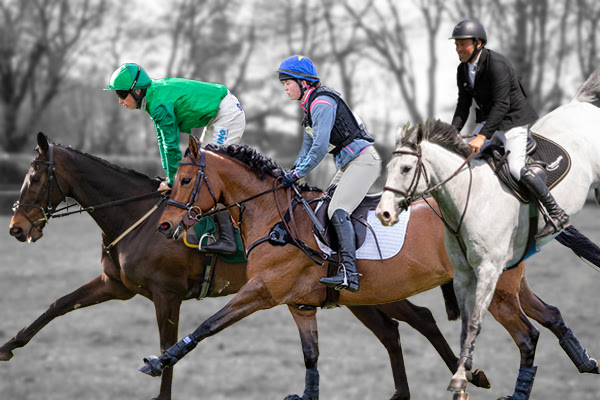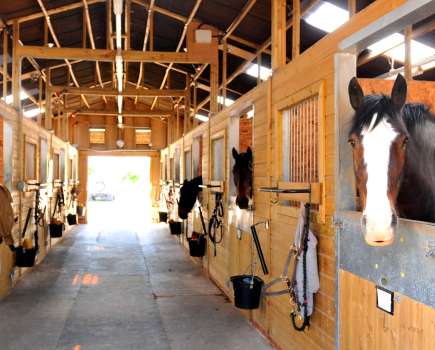Transparency, thinking outside our ‘horsey bubble’ and demonstrating the harmony between horse and rider, could help improve public perception of equestrian sports and help safeguard their future, leading figures from the industry have said.
A discussion hosted by World Horse Welfare yesterday (12 June, 2024) explored ‘Social Licence and the Involvement of Horses in Sport’ and saw top riders speak alongside a leading racing broadcaster, esteemed vet and national representative.
The charity’s chief executive, Roly Owers, summarised the latest research into how the general public view the use of horses in sport, and data suggests opinions remain similar to the findings of last year’s survey, which revealed that the majority have welfare concerns for the animals involved.
Despite new schemes launched by British Racing, the FEI and British Equestrian aiming to help improve welfare, share the power of the horse-human bond and safeguard the continued use of horses within sport, two in five of those surveyed said they would only support horse sport if welfare improves. Three in five said they wanted more horse welfare measures in place and almost 40% were not exposed any horse sport content at all.
Cameras in warm ups?
Vet and Director of Equine Behaviour at The Horse Trust, Gemma Pearson, said transparency was key to helping address this lack of support. She cited licenced racing yard’s and the behind-the-scenes access this provides as something more areas of the equestrian world could adopt, such as including national riders in such a scheme.
She also suggested providing a livestream from the warm up areas of FEI events, and said this greater level of insight would help guard against damaging snapshots of one moment in a photograph or seconds-long video clips which do not show a true picture of a horse’s wellbeing.
Eventing’s Tina Cook was less enthusiastic for such a level of surveillance, noting the different ways horses need to be prepared to enter the ring, and a lack of understanding of this potentially causing confusion about why some horses are warmed up differently to others. She was also concerned it could lead to riders warming up in the lorry park, away from such filming.
Tina believed more focus should lie on a horse’s life after its sporting career, when welfare can fall substandard. Racing journalist Nick Luck seconded this, and said while the afterlife of racehorses is better understood than it once was, some 20% of horses are untracked when they retire from racing.
Nick highlighted the shorter career experienced by racehorses, leaving a longer time of uncertainty for these horses when they retire, compared to those involved in the other disciplines who tend to perform at a high level for a longer time period.
A harmonious relationship
While the general public may not understand the ins-and-outs of our sport, we must not dismiss their concerns and shy away from showing how horses are looked after and how the horse world operates, Nick stressed. He said ambitions to attract new fans cannot be met if we dismiss the views this potential audience.
Nick and vet Gemma agreed that power lied in demonstrating the ‘harmony’ between the horse and rider, such as in the special relationship between Charlotte Dujardin and Valegro, which captured the hearts of the nation during the Olympics. This is something all equestrians, whether happy hackers, top competitors or industry officials should always have at the forefront of their minds.
“Wherever we are, everyone has a camera,” said Gemma. “We should always ride in a way that we would be happy were it to be filmed and shared.
“Everyone has responsibility and we all need to set a good example. Whilst the general public are not welfare scientists they are able to intuitively pick up on welfare, and seeing good welfare is more powerful.
“Welfare is how you feel, it’s not how you look. We always need to look at horse’s emotional state and how they feel. Understanding more about that is key.”









